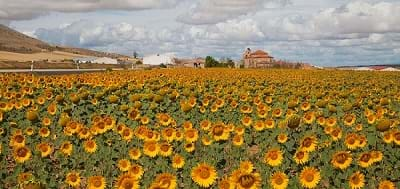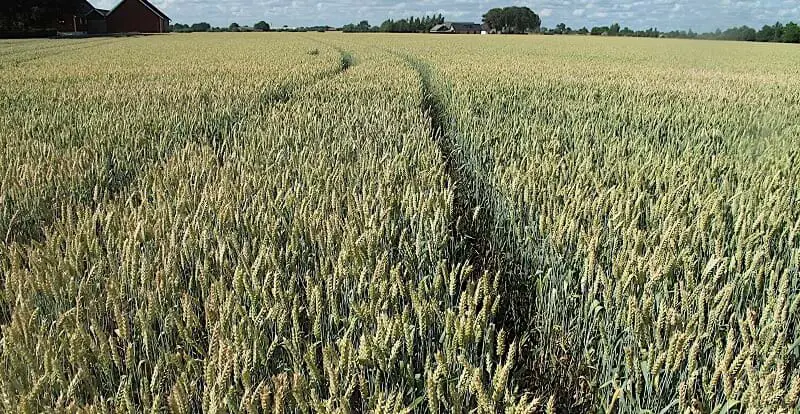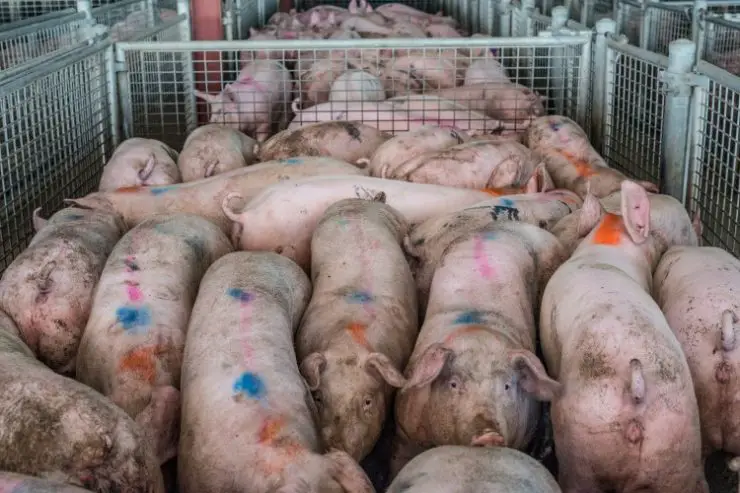23 Intensive Farming Advantages and Disadvantages
Your Intensive farming Pros and Cons Guide

In agriculture, intensive farming is one of the most widely used methods currently getting used. This is because intensive farming aims to provide the highest harvest per area of land.
Intensive agriculture uses a single crop or livestock species, allowing to increase the output efficiency.
The demand for more food at a lower price is the primary factor driving the need to create intensive agriculture systems.
This article will explore all the different advantages and disadvantages of using intensive agriculture.
Advantages of Intensive Farming
What are the Pros of Intensive Farming
- 1) High Crop Yield
- 2) Sustainable Supply of Food
- 3) Intensive Farming is Simple
- 4) Technological Advances
- 5) More Economically Efficient
- 6) Easy for Farmer to Supervisor and Monitor
- 7) Meets the EPA (Environmental Protection Agency) Protocols
- 8) More Variety of Food Can Get Produced
- 9) Specialized Production
- 10) Better Scalability
- 11) Creates Affordable Food Prices
High Crop Yield
Since intensive farming focuses on using monocultures, each plant can go through the same standardized planting, maintenance, and harvesting process.
Having this standardization allows higher yields at a lower cost.
Intensive farming for animals (livestock) will only focus on one type, allowing for the same birth, development, and maturity procedure.

Sustainable Supply of Food
To produce enough food at a reasonable price for people, intensive farmings high crop production gives us a better chance at meeting this demand.
Intensive Farming is Simple
Unlike traditional farming, where you would need to consider all the different crop types in intensive agriculture, we only need to understand a single crop or animal type.
The amount of equipment and methods required to harvest crops and livestock is minimal since it only involves one type.
Technological Advances
Modern agriculture equipment has got designed to focus on a single crop type in the fields.
Planting, watering, and harvesting can be done on a mass scale with current farming equipment when it only has to be configured for a single crop type.
At the beginning of the 20th century, the mechanization replaced the strenuous human labor in agriculture and started the shift towards industrialization–increasing productivity
These advancements have allowed people to take on a wider variety of occupations while lowering food prices and helping to give rise to urbanization.
Even in livestock, technological advances have allowed the feeding and milking of dairy cows to get automated.
Even cleaning the manure from large stables rarely uses people. Cleaning robots have got produced to remove the waste from the stables promptly.
More Economically Efficient
Suppose I only focus on one crop type. In that case, I can increase the efficiency, maximize my space and increase the profit I can collect at the end of the season.
By creating more food at a lower price, I could reduce the cost to the end consumer while keeping a higher profit for myself.
Easy for Farmer Supervisor and Monitor
Since many production processes have gotten offset to machines, farmers can easily monitor progress.
Meets the EPA (Environmental Protection Agency) Protocols
Many different regulations and rules have been put in place by the EPA. These regulations aim to help farmers produce healthier and safer products for the end consumer.
More Variety of Food Can Get Produced
They are focusing on mass production of only a specific crop or animal type results in more food for us to consume in the end.
Initially, I thought that this would result in less food. But because such large quantities of different foods are getting produced, it is available to us.
Different farmers focus on other areas of our food products while maximizing their amount to the end market.
Intensive fruit production, intensive vegetable production, and intensive livestock farming allow for more food for us in the end.
Specialized Production
Since the farmers will cultivate the same crop or livestock species, they can now use the same methods across their entire farmland.
Specializing in such a specific area allows you to develop in-depth knowledge and direct experience on the livestock or specific crop type.
Unexpected weather, pests, and warning signs of disease become easier to identify and mitigate for the farmer.
Farmers also buy one thing in a higher bulk. Buying in higher bulk allows most people to get a higher percentage off the sale price, further reducing the cost for the farmer.
Better Scalability
Intensive farming has a significant focus on automating as much work as possible through the use of machinery.
By replacing people with machines, farmers can scale up production quickly without increasing the number of people they need to employ.
Creates Affordable Food Prices
Since the farmers can create more food on less land with fewer employees, food production costs get reduced.
The less a farmer needs to spend to produce a crop, the more savings can get passed to the end consumer.
Disadvantages of Intensive Farming
What Are The Cons of Intensive Farming
- 1) Increased Use of fertilizers And Pesticides
- 2) Creates an Increase in Pesticide Resistance
- 3) Destroys Soil Nutrients
- 4) Encourages High Use of Fertilizers
- 5) Possibility of Poor-Quality Food Products
- 6) Hard For Traditional Farmers to Compete
- 7) Leads to Worsening Pest Problems
- 8) Deforestation
- 9) Depends on Fossil Fuels
- 10) Increases Risk of Harvest Loss
- 11) Poor Living Conditions And Hygiene For Livestock
- 12) Use of Chemical Hormones in Food
Increased Use of Fertilizers And Pesticides
Creates an Increase in Pesticide Resistance
To deal with pests infesting a crop, the farmers will apply a pesticide to kill them off. But some insects always seem to survive.
The insects that survive begin to develop a resistance to the applied pesticide slowly. Then, the next generations start to get born with the same pesticide resistance.
To deal with the increase of pests surviving each application, farmers begin to apply more often and higher amounts of pesticides in the future.
It's not just insects. The resistance applies to many different species of weeds that are becoming more and more resistant also.
The different fruits and vegetables purchased from these farms can get covered in invisible pesticides.
Destroys soil nutrients
The use of intensive farming has caused more damage to our soil than almost any other activity.
According to the United Nation’s backed study from 2017, one-third of the planet’s soils are degraded due to inconsiderate methods used in the modern agriculture.
The soil's microbe biodiversity slowly begins to alter and reduces in number. As a result, the ecosystem of the ground becomes out of balance and produces more negative impacts.
Soil organisms, like mites, earthworms, are essential to have a healthy soil structure and composition. In addition, the physical characteristics of the soil and a wide variety of plant types are needed to keep these organisms flourishing.
Encourages high use of fertilizers
Because of the reduced soil quality to maintain high yields, farmers need to apply fertilizers (usually synthetic) to keep up crop productivity.
These fertilizers applied in large amounts increase the risk of finding their way into our underground water sources.
Possibility Of Poor-Quality Food Products
As the nutritional value of our soils continues to get more depleted, the crops grown on the land begin to reduce their nutritional value.
The key to healthier produce is healthier soil.
Hard For Traditional Farmers to Compete
Intensive farming provides more significant production with less space and labor to maximize profits.
Traditional farming requires much more management and time. Less of the process can get automated, and you can not maximize your harvest compared to intensive agriculture.
Leads to Worsening Pest Problems
When pests find a place where their food source is plentiful, they will accumulate and multiply within that area.
Under the right conditions, they will prosper and grow in numbers in a short time.
Weeds and insect pests can spread faster in monocultures because of the lack of biological and genetic diversity.
Pest problems have been an area of concern with mono-crops for several decades now.
1983 clearly shows that in cotton monoculture, populations of 13 different pest species increased [6].
Deforestation
Since we needed to create more room for our agriculture, it has resulted in the loss of trees and the clearing of forest areas.
The removal of these areas results in a loss of the natural habitat and affects animal life.
Depends on Fossil Fuels
The high amount of automation and machinery used in intensive farming has a high requirement on fossil fuels.
Many farms are still using fossil fuels to provide energy to the equipment since it is cheaper and more efficient than renewable sources.
The fertilizers and pesticides used by intensive farming also get processed and delivered using fossil fuels.[7]
Increases Risk of Harvest Loss
Intensive agriculture has a real lack of biodiversity. The lack of biodiversity puts a farmer at a much higher risk of losing their entire crop for the growing season.
The entire crop has the same environmental conditions generally has the same genotype means that the whole crop is sensitive to the same dangers.
The crop is at a greater risk for pests, disease, nutrient problems, and many other possible irregularities.
Poor Living Conditions And Hygiene For Livestock

Intensive factory farming places Species such as cows, pigs, chickens, and sheep into confined areas where they are bred and born.
Many give the animals antibiotics throughout their lives, and the animals have a shortened lifespan. Some are even kept indoors for their entire life.
Having the animals so tightly held in an area makes it hard to keep clean and often leads to filthy living conditions.
Use of Chemical Hormones in Food
There is an increasing amount of evidence suggesting that the sub-therapeutic use of antibiotics in food animals can pose a health risk to humans.
Conclusion
While Intensive agriculture is a very efficient system to maximize production. It is coming at a high cost to us, animals, and the environment.
Because of all of the drawbacks of intensive agriculture and its unsustainability, companies need to focus on more sustainable options.
Similar Articles
Impact of Monoculture on Food Security
Monoculture Fish Farming
Monoculture Farming Benefits and Disadvantages
[1]https://www.britannica.com/topic/intensive-agriculture
[2]https://www.beep.ac.uk/content/339.0.html
[3]https://greentumble.com/advantages-and-disadvantages-of-monoculture-farming/#specialized
[4]https://www.conserve-energy-future.com/advantages-disadvantages-examples-monoculture.php
[5]https://livestock247.com/blog/2021/03/03/intensive-farming-advantages-disadvantages/
[6]https://www.researchgate.net/publication/237947171_The_extent_of_monoculture_and_its_effects_on_insect_pest_populations_with_particular_reference_to_wheat_and_cotton
[7]http://vaclavsmil.com/wp-content/uploads/docs/smil-article-worldagriculture.pdf
[8]https://www.theguardian.com/environment/2017/sep/12/third-of-earths-soil-acutely-degraded-due-to-agriculture-study
[9]https://sentientmedia.org/intensive-agriculture/
[10]https://www.pbs.org/wgbh/pages/frontline/shows/meat/safe/overview.html
[11]https://www.scientificamerican.com/article/soil-depletion-aND-NUTRITION-LOSS/
[12]https://www.farmmanagement.pro/advantages-and-disadvantages-of-intensive-farming/